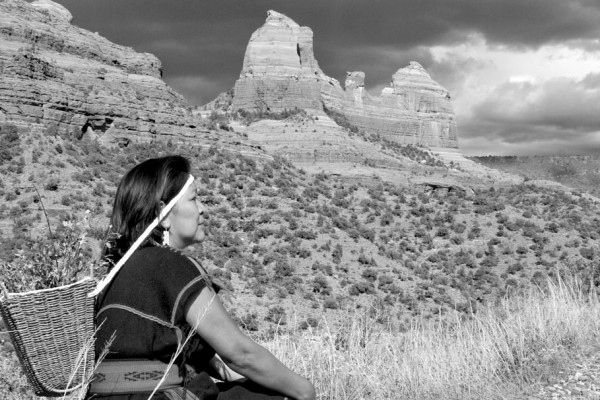Continued (page 3 of 10)
Sedona: Director Tommy Stovall
Back in March 2009, Sedona Monthly began chronicling the making of Sedona, the latest film from Sedona residents Tommy Stovall and Marc Sterling. Tommy wrote and directed his first film, Hate Crime,back in 2005 (Marc was the movie’s producer). Sedona Monthly was given a sneak peek at a rough version of Sedona, which stars Frances Fisher, Seth Peterson and Beth Grant, this past fall. We spoke to Tommy after the screening, and he reflected on the filmmaking process. He also talked about his excitement over Sedona’s Red Rock Country debut.
Sedona Monthly: We saw a rough cut of Sedona last week. Where are you right now in the editing process?
Tommy Stovall: I’ve put together the next edit, which will be the final before the sound and music are added. We’re going to work on that over the next few weeks.
Will the story line be the same as what we saw?
It’ll be the same. We’ll be tweaking a few things and rearranging some stuff.
You’ve screened the movie for select audiences. What has been the response?
We’ve had a great response. We’ve had people fill out questionnaires to give us feedback, and I was pleasantly surprised. Even without the music and sound, it still played well.
Looking back, how did the filmmaking process compare to Hate Crime?
We had a lot of obstacles and challenges to deal with. It was pretty stressful, but it was still fun. Making an independent film is all about solving problems, and we were doing that the whole time. Everything happened fast, so it was kind of a whirlwind.
The filming did take place quickly. Do you feel like the movie is true to your original vision?
Yes. It’s always hard to envision how things will turn out exactly because you don’t know where you’ll be shooting or who the actors will be. We followed the script and everything worked out pretty well.
When we spoke to Frances Fisher, she said you were open to suggestions on the script. How much did the script evolve during filming?
Nothing major changed. Sometimes dialogue will change. I’ll sit down with an actor, and we talk about it and come up with something that works that we’re both comfortable with.
This was the first time you’ve worked with big-name actors. What was that like?
It really wasn’t that different from working with the actors in Hate Crime. You always have expectations about certain actors, and it’s usually wrong when you meet them in person. They are just people. Luckily we’ve had great actors to work with on both movies. They’ve been down to earth, and they are great at what they do.
What was it like working with so many extras who were close friends of yours?
We had a lot of extras to help us out. Being an extra isn’t as fun as it may sound. It’s a lot of waiting around and a lot of hours on the set. I’m conscious of that. I’m worried about people waiting there and hoping they aren’t mad or bored. People were really great. So many liked it so much, they came back again. A lot hadn’t been on a movie set, so they were fascinated by what was going on. Most people didn’t realize how much work it is or how big the crew is.
What was it like directing your nine-year-old son, Trevor, who has a major role in the film?
That was what I was most nervous about as far as working with the actors. I knew that he had the capability of doing a good job. I wrote the part for him. My concern was him being able to work those hours and do scenes over and over. I didn’t know if he’d be bored and tired, but he was great. He had a lot of fun. Sagan Lewis was our on-site acting coach, and she worked with him as well as Rand [Schwenke], who played his brother. She had them totally prepared. They knew their lines inside and out, and they were the most prepared actors on the set. It made for an easy time. I expected to take more time on the kids’ scenes, but it actually took less time in a lot of cases because they were so prepared.



